
China Meteorological Administration (CMA) has remained a stalwart player in the international meteorological community.Throughout the years, CMA has made strenuous efforts to enhance meteorological monitoring, forecasting and early warning capacities, as well as making its contributions to global meteorological undertaking and conducting active regional meteorological cooperation with myriad countries and territories. Specifically, meteorological services for the "Belt and Road" territories have achieved fruitful results.
Capabilities of Services
Fengyun Satellites
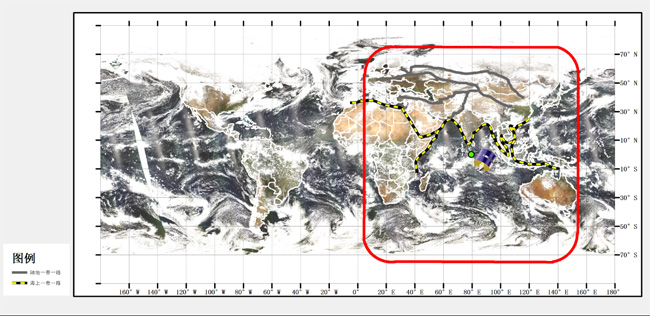
CMA positioned FY-2H meteorological satellite at 79°E, which can provide continuous observation for Southern Asia, Western Asia, Central Asia, and most African countries. Credits: National Satellite Meteorological Center
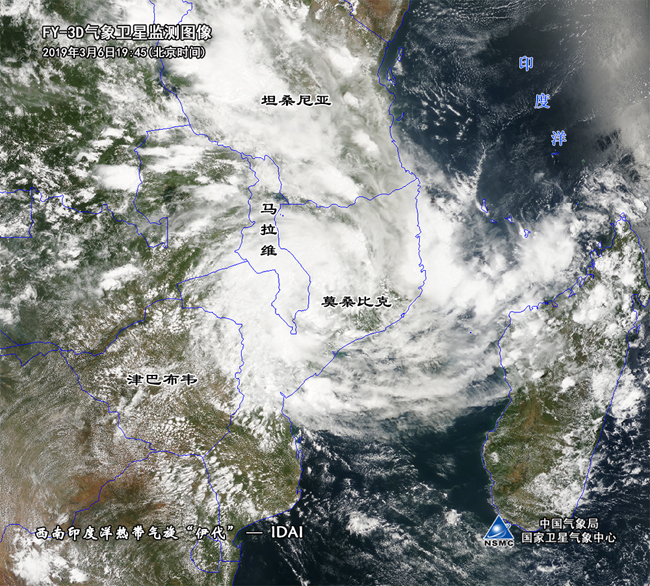
FY-3D meteorological satellites monitors tropical cyclone Idai. (19:45 p.m. on March 6, 2019, Beijing Time)
Disaster prevention and mitigation
Serving “Belt and Road” enables CMA to better fulfill the responsibilities of global or regional centers and provide higher quality meteorological services for regions and the globe at large.
At the 16th Session of the WMO Regional Association II (Asia) held in February 2017, CMA and Hong Kong Observatory (HKO) jointly proposed the Pilot Project to Enhance the Capability of Meteorological Disaster Risk Reduction in RA II (Asia).
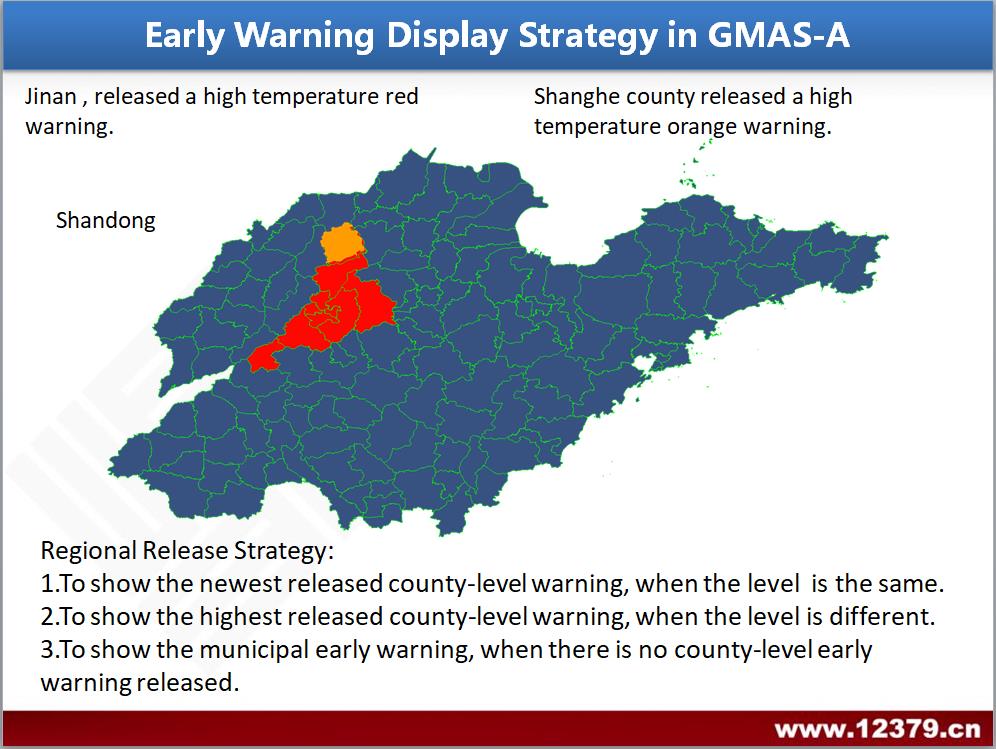

At present, the project has entered the initial implementation stage, which focuses on promoting WMO Global Multi-Hazard Alert System-Asia (GMAS-A). Based on the global center participating in the WMO-sponsored Severe Weather Forecast Demonstration Project for Southeast Asia (SWFDP-SeA), CMA has completed the development of the related website, through which guidance products developed with China’s NWP system and FY-2 satellites are officially provided to four Southeast Asian countries. The meteorological video studio offered to Laos helps put its NHMS in a better position to cope with disasters.
In September, 2018, GMAS-A was connected with China national emergency early warning release system. Visitors can obtain early warning information of all localities of China, as well as countries and territories like Thailand, Myanmar, Kuwait, Russia, and Hong Kong China.
World Meteorological Centre Beijing
During the 69th Session of the World Meteorological Organization (WMO) Executive Council held in Geneva from May 10 to 17, CMA was officially recognized as the World Meteorological Centre (WMC). The main responsibilities of WMC-Beijing Operation Office is to take on WMC-Beijing’s routine coordination and operations support and managements, draw up the WMC-Beijing working plans and operations implementation plan and also serve as the working connection and communication point with other WMCs and WMO relevant programmes.

Website of WMC-Beijing
On March 29th, 2019, the first World Meteorological Centres Workshop closed in Beijing and achieved many results. In the future, against the backdrop of the globalization, the World Meteorological Centres will improve cooperation mechanisms and build World Meteorological Organization (WMO) Earth System Prediction together to serve the global community.
WMC-Beijing has developed over 30 kinds of products based on GRAPES numerical weather prediction system, integrated forecasting system, and climate forecasting system, formulated and provided FY satellites series imaging products, and weather analysis products, and provided meteorological operational guidance for meteorological departments along “Belt and Road” territories and from the entire globe.
WMC-Beijing provides technological support for countries along the “Belt and Road”. It has made over 20 kinds of products in terms of FY-2H satellite cloud image, temperature and precipitation conditions, numerical weather prediction and integrated forecast, and precipitation climate forecast targeted at the drought in Afghanistan, provided online services for Afghanistan meteorological departments, and organized disastrous weather forecast demonstration project of WMO, Southeast Asia, Central Asia, and Bay of Bengal.
Meteorological Cooperation
Under the framework of the Letter of Intent between the World Meteorological Organization and the China Meteorological Administration to Promote Regional Meteorological Cooperation and Co-build the Belt and Road, which was signed between WMO and CMA in 2017, CMA is making efforts to enhance cooperation with all parties including meteorological departments of ASEAN, Central Asia and Africa.
China-ASEAN:
CMA and its ASEAN counterparts have reinforced their cooperation and exchanges in various fields by participating in activities and programs sponsored by global and regional organizations like WMO, ESCAP and TC and at the bilateral level.
During the 13th China-ASEAN Expo taking place in September 2016, CMA held the first China-ASEAN Meteorological Forum. Representatives from the ASEAN NMHSs, WMO, United Nations Economic and Social Commission for Asia and the Pacific (ESCAP) and Typhoon Committee (TC) attended the Forum and adopted the Nanning Initiative on China-ASEAN Cooperation on Meteorology. According to the Initiative, China and the ASEAN countries would strengthen cooperation in such aspects as cooperation mechanism, meteorological observation, disaster co-preparedness, technical interaction, climate services, aeronautical meteorological services, instrument calibration and meteorological training and education.
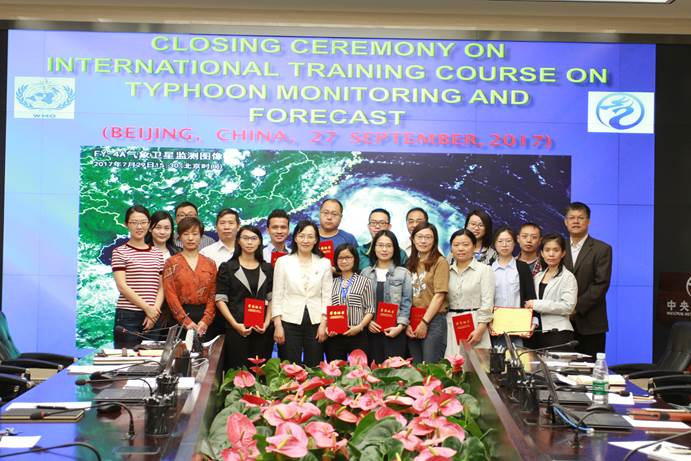
In September 2017, the second international training course on typhoon monitoring and forecast was held in Beijing.
Since 2016, 26 short-term international training courses have been organized, with about 100 participants from ASEAN countries. Since September 2016, the FengYun Satellite Data Centre has registered additional 20 users from ASEAN countries, including the Philippines, Malaysia, Myanmar, Thailand, Singapore and Vietnam. 13 kinds of products have been subscribed including cloud, precipitation and dust, to underpin good delivery of meteorological services. CMA has completed the development of the website of Severe Weather Forecast Demonstration Project for Southeast Asia (SWFDP-SeA), through which guidance products developed with CMA’s NWP system and FY-2 satellites are officially provided to Southeast Asian countries. The meteorological video studio offered to Laos helps to put its NHMS in a better position to cope with disasters.
CMA Atmospheric Observation Research Centre for ASEAN has been set up. A standard meteorological metrology laboratory has been put in place, which will provide instrument calibration services for the ASEAN countries.
China-Central Asia
In October 2015, the first International Workshop of Meteorological Science and Technology in Central Asia was held. Representatives from China, Australia, Kazakhstan, Kyrgyzstan, Tajikistan and other meteorological departments of Central Asia signed Urumqi Initiative. They have reached consensus in regional meteorological disaster preparedness, climate change research, and cooperative mechanism construction. They have set up Central Asia Center for Atmospheric Science Research, held 4 sessions of Meteorological Scientific and Technological Seminar of Central Asia, launched Central Asia meteorological website; co-built forest ecological meteorological monitoring station and all-factor weather automatic meteorological station of glacier, and conducted monitoring of mountainous regions, forecasts, and glaciers and tree rings climate research. In 2019, CMA will study and make custom-made meteorological service products on desert and sand for Central Asia countries like Kyrgyzstan.
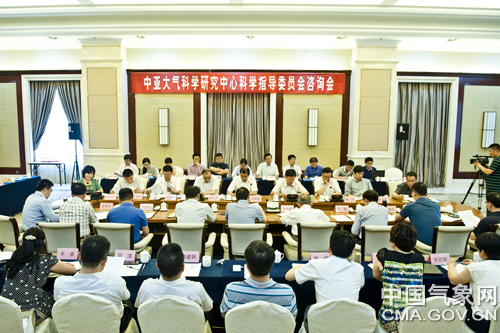
In June 2016, Central Asia Centre for Atmospheric Research and its Scientific Steering Committee were set up.
The Central Asia meteorological service website has gone online in the three languages of Chinese, English and Russian to serve as an online communication platform, to provide and share data, products and services of meteorological monitoring, satellite remote sensing, numerical weather forecast of Central Asia. The Central Asian Center for Atmospheric Sciences established by China and Central Asian countries has been rewarded with outputs from the research studies of climate change and atmosphere.CMA has convened a bilateral meeting with its Kazakhstani counterpart to reach preliminary agreement on future cooperation. CMA has implemented a project with Uzbekistan by deploying three automatic weather stations.
On June 13, 2019, CMA and Kyrgyzstan Ministry of Emergency Situations signed an agreement on cooperation in Fengyun satellite meteorological services. They will conduct pragmatic cooperation in FY satellites data transmission, reception and sharing, satellite remote sensing application platform construction, FY products development and application, emergency support services, personnel training, and technical exchanges.
China-Africa
In 2013, the Chinese government activated meteorological aid project for 7 African countries, namely, the Comoros, Zimbabwe, Kenya, Namibia, DRC, Cameroon and Sudan. Thereafter, meteorological facilities like FY-3 meteorological satellite data reception and processing system, automatic meteorological stations, lightning locating instrument, meteorological early-warning radio control system, meteorological early warning radio, and MICAPS have been installed in Africa. On July 28, 2018, FY-2H, was positioned over Indian Ocean, with the setpoint position placed westward by 7.5°, to 79°E, and provided high frequency observation data for African countries.
By August of 2018, China has basically completed project implementation in seven countries. The project includes 42 sets of automatic weather stations, 100 sets of artificial meteorological observation systems, 5 sets of lightning locators, two sets of FY-3 satellite data receiving and processing systems, two sets of high-altitude detection systems, more than 10,000 sets of weather warning radios, 4 sets of meteorological video studio, 5 sets of MICAPS, 4 sets of meteorological communication systems, and two sets of meteorological information storage retrieval systems.
According to the FOCAC Beijing Action Plan (2019-2021) passed in 2018, China made the commitment that it’s willing to continue to provide Fengyun satellite data and products, and necessary technical support for African countries, furnish meteorological and remote sensing application infrastructure and educational assistance, support the implementation of African meteorological (weather and climate services) strategies, and enhance their capabilities of disaster preparedness as well as response to climate change.

CMA signed cooperative agreement with Mozambique's National Institute of Meteorology in 2019.
On June 12, amidst 18th World Meteorological Congress, CMA signed Fengyun satellites application cooperative agreement with meteorological departments of Mozambique and Oman respectively, and consulted on deepening cooperation and promoting “Belt and Road” meteorological cooperation with meteorological departments of the South Africa and Namibia. They will conduct cooperation in fields like FengYun satellites data ground reception system and application platform development, emergency support services, technical exchanges, training, and so on.
Since 2012, 720 trainees from African countries have participated in 80 short-term international training courses hosted in WMO RTC Nanjing and Beijing.
International training and personnel exchange
By 2019, WMO RTC Beijing and Nanjing have provided short term international training courses in terms of meteorological forecast, satellite application and other fields for over 4000 foreign trainees.
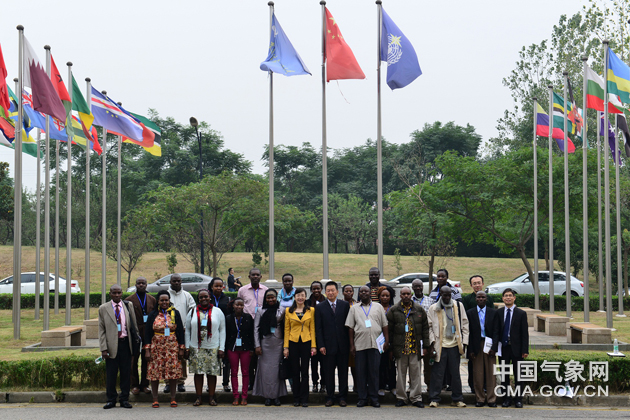
Seminar on Uganda meteorology was held from October to November in WMO Nanjing Regional Training Center, 2016. Credits: NUIST
Since 1976, CMA has organized 48 China study tours, receiving nearly 500 directors and senior officials from NMHSs of more than 140 countries.(Jun.28)

The 3rd International Training Course on Global Framework for Climate Services (GFCS) was held in April, 2017. Credits: CMA Training Centre.
Editor:Liu Shuqiao, Hao Jing